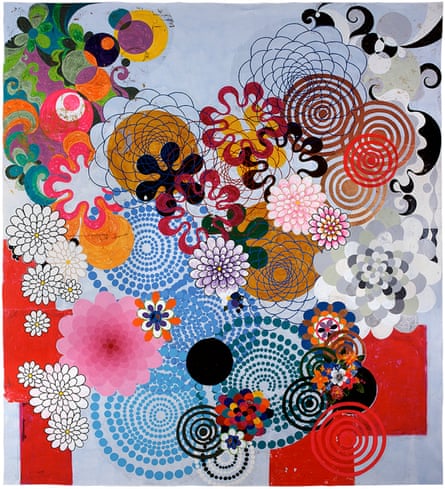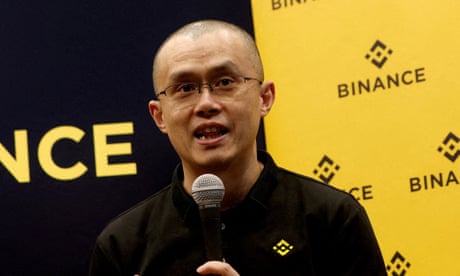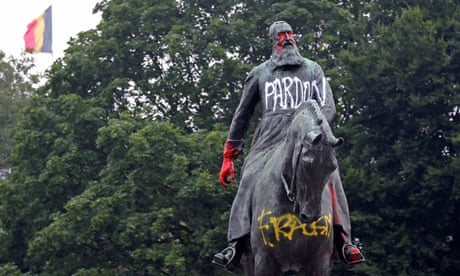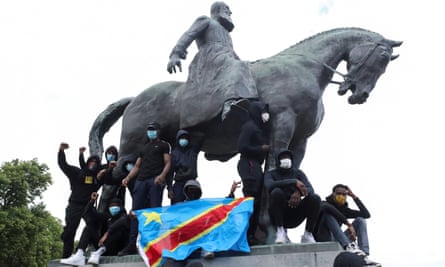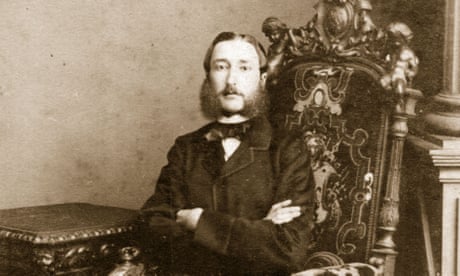The ink blots have been used as a diagnostic tool for 100 years, but the making of new ones, every five years, has been a closely guarded secret – until now

Say what you see … Rorschach ink blots. Photograph: Jeremy Millar/The Guardian
Jeremy Millar
Jeremy Millar
The Guardian
Wed 17 May 2023
For images that have been reproduced for more than a century and looked at, quite intently, by millions of people, there is a great deal of secrecy surrounding the Rorschach ink blots. These famous cards – both intensely guarded and instantly recognisable – continue to be used for psychological diagnosis around the world. New copies are only printed every five years or so, and no one has ever been allowed to document the process. So when I asked the publisher recently if I might do so, I had not expected them to say yes. There were conditions, of course: the most perplexing of which was that if I were to document the printing of the Rorschach ink blots, I must do so without revealing any information about the printing of the Rorschach ink blots. It seemed a test as exquisitely elegant as the one for which the cards themselves are used.
The ink blots are named after Hermann Rorschach, a Swiss psychologist who died so young that he only makes it halfway through his biography. One Sunday in late March 1922 he is taking his wife Olga to see Peer Gynt at the theatre and a week – five pages – later he’s dead. He had been born in Zürich 37 years earlier, the first of three children – two boys and a girl – to Philippine and Ulrich. His father was an extremely skilled artist and wrote a 100-page treatise titled Outline of a Theory of Form in which he considered many aspects of visual perception, asking: “Who among us has not often and with pleasure turned our eyes and imagination to the ever-changing shapes and movements of the clouds and the mist?”. Hermann became a gifted student and joined the elite academic Gymnasium in Schaffhausen, northern Switzerland. His skill as an artist was perhaps his defining characteristic, however, and led to his admiringly mocking nickname of Klex, a shortening of klexen or klecksen, which means something like “to daub”. Klex also means ink blot.
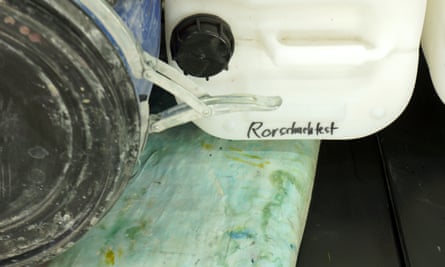
Wed 17 May 2023
For images that have been reproduced for more than a century and looked at, quite intently, by millions of people, there is a great deal of secrecy surrounding the Rorschach ink blots. These famous cards – both intensely guarded and instantly recognisable – continue to be used for psychological diagnosis around the world. New copies are only printed every five years or so, and no one has ever been allowed to document the process. So when I asked the publisher recently if I might do so, I had not expected them to say yes. There were conditions, of course: the most perplexing of which was that if I were to document the printing of the Rorschach ink blots, I must do so without revealing any information about the printing of the Rorschach ink blots. It seemed a test as exquisitely elegant as the one for which the cards themselves are used.
The ink blots are named after Hermann Rorschach, a Swiss psychologist who died so young that he only makes it halfway through his biography. One Sunday in late March 1922 he is taking his wife Olga to see Peer Gynt at the theatre and a week – five pages – later he’s dead. He had been born in Zürich 37 years earlier, the first of three children – two boys and a girl – to Philippine and Ulrich. His father was an extremely skilled artist and wrote a 100-page treatise titled Outline of a Theory of Form in which he considered many aspects of visual perception, asking: “Who among us has not often and with pleasure turned our eyes and imagination to the ever-changing shapes and movements of the clouds and the mist?”. Hermann became a gifted student and joined the elite academic Gymnasium in Schaffhausen, northern Switzerland. His skill as an artist was perhaps his defining characteristic, however, and led to his admiringly mocking nickname of Klex, a shortening of klexen or klecksen, which means something like “to daub”. Klex also means ink blot.

Unique inks being mixed. Photograph: Jeremy Millar/The Guardian
Rorschach was not the first to consider the importance of these indeterminate forms, and in the newly developing science of psychology, ink blots were being used as prompts by which one might gauge a subject’s imagination. As a medical student, Rorschach came to use them similarly, showing psychiatric patients and young teenagers alike newly made blots and noting what they saw. He soon began to consider these methods as somewhat unimaginative, however, and in 1917 he started developing his own test – although he thought of it more as an experiment – creating images which seem not to have been made at all but which were also not simply random. Their purpose must not be obvious, but they must seem to have one.
As well as the ink blots, Rorschach also had to design the “protocol” by which the subject’s responses were gathered and assessed, and here he adopted categories that seemed to relate to the avant-garde art of the period with which he was fascinated: Detail and Whole; Movement, Colour and Form. Each subject’s response was given a code that not only related to what they saw but also how well they saw. Rorschach would then collate these and make some simple calculations, noting the percentages of response which corresponded to Movement, or Colour, or whether the noted Forms were well or poorly seen.
As Rorschach understood, if the responses of different subjects are to be compared, then the thing to which they are responding must be the same, and given that this is a test that depends on visual acuity, then it must be exactly the same; “similar” is hardly a scientific category. The practical difficulties of reproducing the ink blots led to delays in first publishing the work – which was given the title Psychodiagnostik – and when it did appear in 1921, Rorschach had personally supervised the production of the print run of 1,500 sets, even, at this late stage, eliminating elements that he considered irrelevant for diagnostic purposes. The book was sold with 10 printed ink blots in a separate envelope; the buyer was to glue the images to card themselves.

Rorschach was not the first to consider the importance of these indeterminate forms, and in the newly developing science of psychology, ink blots were being used as prompts by which one might gauge a subject’s imagination. As a medical student, Rorschach came to use them similarly, showing psychiatric patients and young teenagers alike newly made blots and noting what they saw. He soon began to consider these methods as somewhat unimaginative, however, and in 1917 he started developing his own test – although he thought of it more as an experiment – creating images which seem not to have been made at all but which were also not simply random. Their purpose must not be obvious, but they must seem to have one.
As well as the ink blots, Rorschach also had to design the “protocol” by which the subject’s responses were gathered and assessed, and here he adopted categories that seemed to relate to the avant-garde art of the period with which he was fascinated: Detail and Whole; Movement, Colour and Form. Each subject’s response was given a code that not only related to what they saw but also how well they saw. Rorschach would then collate these and make some simple calculations, noting the percentages of response which corresponded to Movement, or Colour, or whether the noted Forms were well or poorly seen.
As Rorschach understood, if the responses of different subjects are to be compared, then the thing to which they are responding must be the same, and given that this is a test that depends on visual acuity, then it must be exactly the same; “similar” is hardly a scientific category. The practical difficulties of reproducing the ink blots led to delays in first publishing the work – which was given the title Psychodiagnostik – and when it did appear in 1921, Rorschach had personally supervised the production of the print run of 1,500 sets, even, at this late stage, eliminating elements that he considered irrelevant for diagnostic purposes. The book was sold with 10 printed ink blots in a separate envelope; the buyer was to glue the images to card themselves.

A densitometer ensures consistency. Photograph: Jeremy Millar/The Guardian
It was a young apprentice, Herr Bögli, who worked on this first printed set of ink blot images, and he recorded all of Rorschach’s instructions in the most minute detail, from subtle tonal shifts to the all-important asymmetries in what – at first glance – seem to be the most symmetrical of images. Bögli’s notes became the “printing bible” for the production of the ink blots, and even when a new publisher took on the work in 1927, Bögli worked on it once more, and would continue to do so for decades to come.
It was a young apprentice, Herr Bögli, who worked on this first printed set of ink blot images, and he recorded all of Rorschach’s instructions in the most minute detail, from subtle tonal shifts to the all-important asymmetries in what – at first glance – seem to be the most symmetrical of images. Bögli’s notes became the “printing bible” for the production of the ink blots, and even when a new publisher took on the work in 1927, Bögli worked on it once more, and would continue to do so for decades to come.
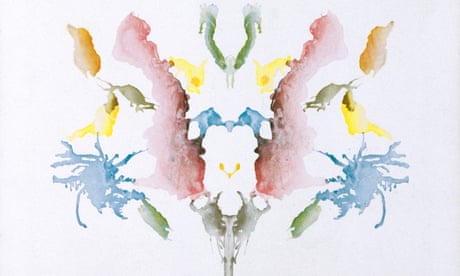
Can we trust the Rorschach test?
While the inkblots were soon becoming well known, the method of their production remained secret – and that remains the case to this day. (Even the printer does not know it all: each ink colour is specially prepared elsewhere and is used for the ink blots alone.) Developments in print technology over the past century have meant that great care has had to be taken in order to ensure consistency. For most of this period, the ink blots were printed using a letterpress machine in which raised metal plates called – happily – clichés transfer a single colour on to the prepared sheet; when new plates had to be made, even a different composition of the metal used produced new effects – flatter colours, crisper edges – and minute, crucial adjustments then had to be made. For the past decade the ink blots have been produced using lithographic plates, but not with the cyan, magenta, yellow and black inks used to print magazines, for example, but with the specially mixed Rorschach ones.

Some of the blots bleed on to other sheets.
Photograph: Jeremy Millar/The Guardian
And so for an undisclosed period at the end of March, in an undisclosed location near Bern, I watched as both printer and publisher gazed intently at sheet after sheet taken off the press. Few ink blots can have been looked upon as carefully as these, although this time it was the forms being tested, and not those looking at them. I was not allowed to look so directly, however, so my camera was turned obliquely, glancing seemingly familiar shapes obscured by other objects or sliding across the shine of their glossy surfaces. There were ink blots and stains everywhere, of course, and sometimes the shapes would seem to slip from the printed sheets and surface elsewhere – on plastic tubs or radiators – and one could not help but wonder what any of them might mean. At other times, test prints would mean that ink blots would be overlaid one upon the other and new mutations would form, and one could not help but wonder what new conditions they might diagnose or which they might help bring about.
Much of my life has been spent looking at images, wondering what they might mean, and though these ink blots may not be artworks, they operate perhaps in a similar way, depending on a “leaning-in” of the viewer and then inviting them to do so. And, invited, I leaned in too, in a small printshop in a village settled in a Swiss valley and there I found … well, I cannot say.
The ink blots will probably not be printed again for another 10 years, and this may be the final time that they are mechanically reproduced with smudges and stains, klex. What do you see?
Jeremy Millar is an artist and head of programme, MA writing, at the Royal College of Art, London. All photographs are from the series Detail and Whole; Movement, Colour and Form (2023); more images from the series can be found at jeremymillar.org
And so for an undisclosed period at the end of March, in an undisclosed location near Bern, I watched as both printer and publisher gazed intently at sheet after sheet taken off the press. Few ink blots can have been looked upon as carefully as these, although this time it was the forms being tested, and not those looking at them. I was not allowed to look so directly, however, so my camera was turned obliquely, glancing seemingly familiar shapes obscured by other objects or sliding across the shine of their glossy surfaces. There were ink blots and stains everywhere, of course, and sometimes the shapes would seem to slip from the printed sheets and surface elsewhere – on plastic tubs or radiators – and one could not help but wonder what any of them might mean. At other times, test prints would mean that ink blots would be overlaid one upon the other and new mutations would form, and one could not help but wonder what new conditions they might diagnose or which they might help bring about.
Much of my life has been spent looking at images, wondering what they might mean, and though these ink blots may not be artworks, they operate perhaps in a similar way, depending on a “leaning-in” of the viewer and then inviting them to do so. And, invited, I leaned in too, in a small printshop in a village settled in a Swiss valley and there I found … well, I cannot say.
The ink blots will probably not be printed again for another 10 years, and this may be the final time that they are mechanically reproduced with smudges and stains, klex. What do you see?
Jeremy Millar is an artist and head of programme, MA writing, at the Royal College of Art, London. All photographs are from the series Detail and Whole; Movement, Colour and Form (2023); more images from the series can be found at jeremymillar.org



